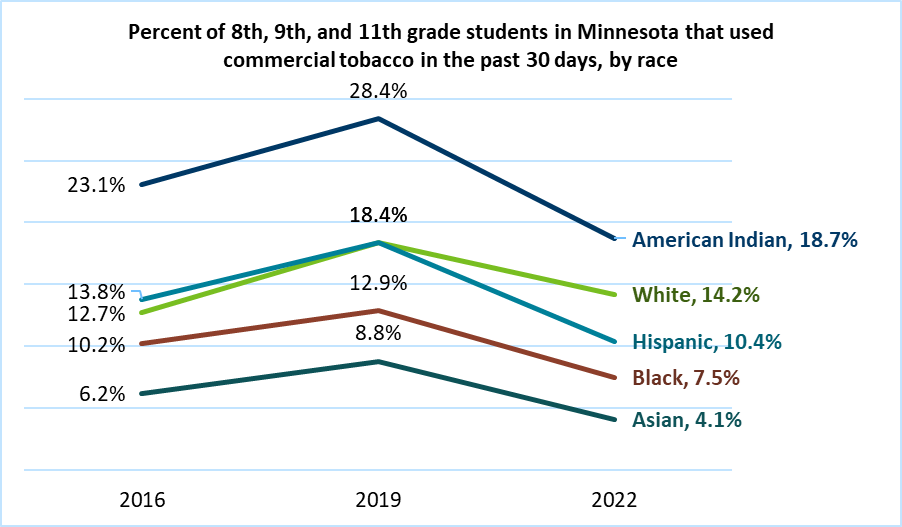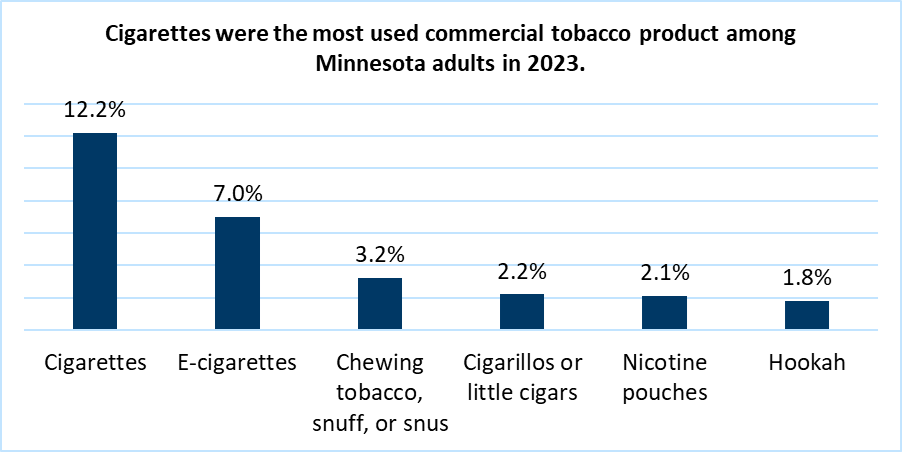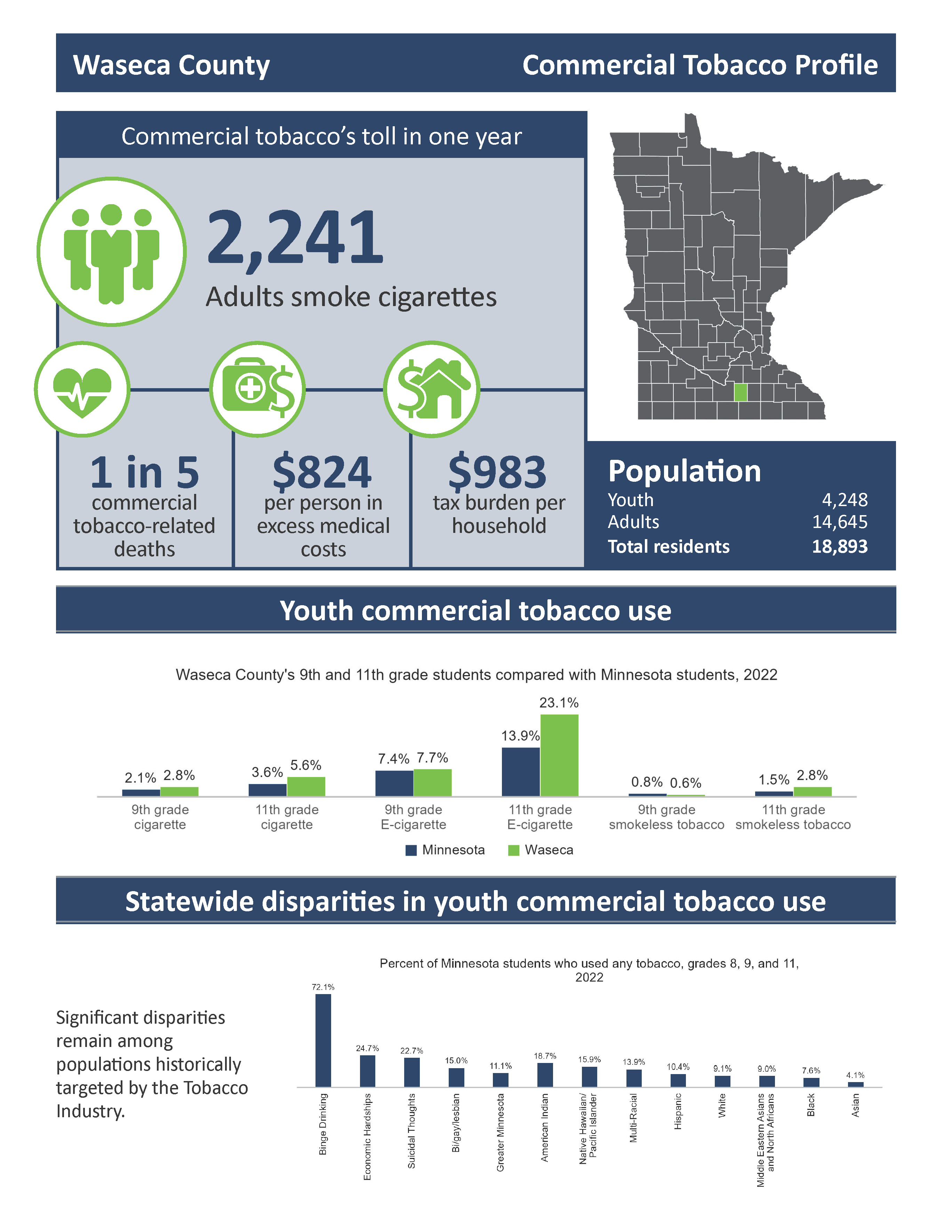Commercial Tobacco Use
Data and Reports
Commercial tobacco use, like smoking, vaping, or using chew, continues to slowly decline. However, our research shows many young people still use e-cigarettes (vape), and for them the signs of nicotine dependency are increasing. In addition, commercial tobacco use rates are not falling at the same pace for all communities. The tobacco industry continues to target communities with price discounts and special promotions for commercial tobacco products.
On this page:
Youth commercial tobacco use
Adult commercial tobacco use
Local commercial tobacco profiles
Community data and reports
Legislative reports
Youth commercial tobacco use
Data from the 2023 Minnesota Youth Tobacco Survey shows 13.9% of Minnesota high school students reported using an e-cigarette in the past 30 days. E-cigarettes are the most used commercial tobacco product among youth, and nearly all e-cigarettes contain nicotine. Nicotine is highly addictive.
Data from the Minnesota Youth Tobacco Survey in 2020 and 2023 also show that more students who currently use e-cigarettes are reporting signs of dependence. Overall, 79.6% of students who use e-cigarettes in 2023 report one or more signs of dependence, an increase from 70.4% in 2020.
Significant disparities remain among populations historically targeted by the tobacco industry. Minnesota Student Survey data (2016-2022) show that while, overall, commercial tobacco use is declining, rates are not declining at the same pace for all communities.
Learn more: Data Highlights from the 2023 Minnesota Youth Tobacco Survey (PDF)


